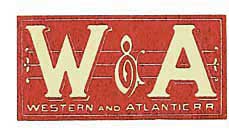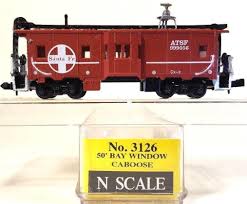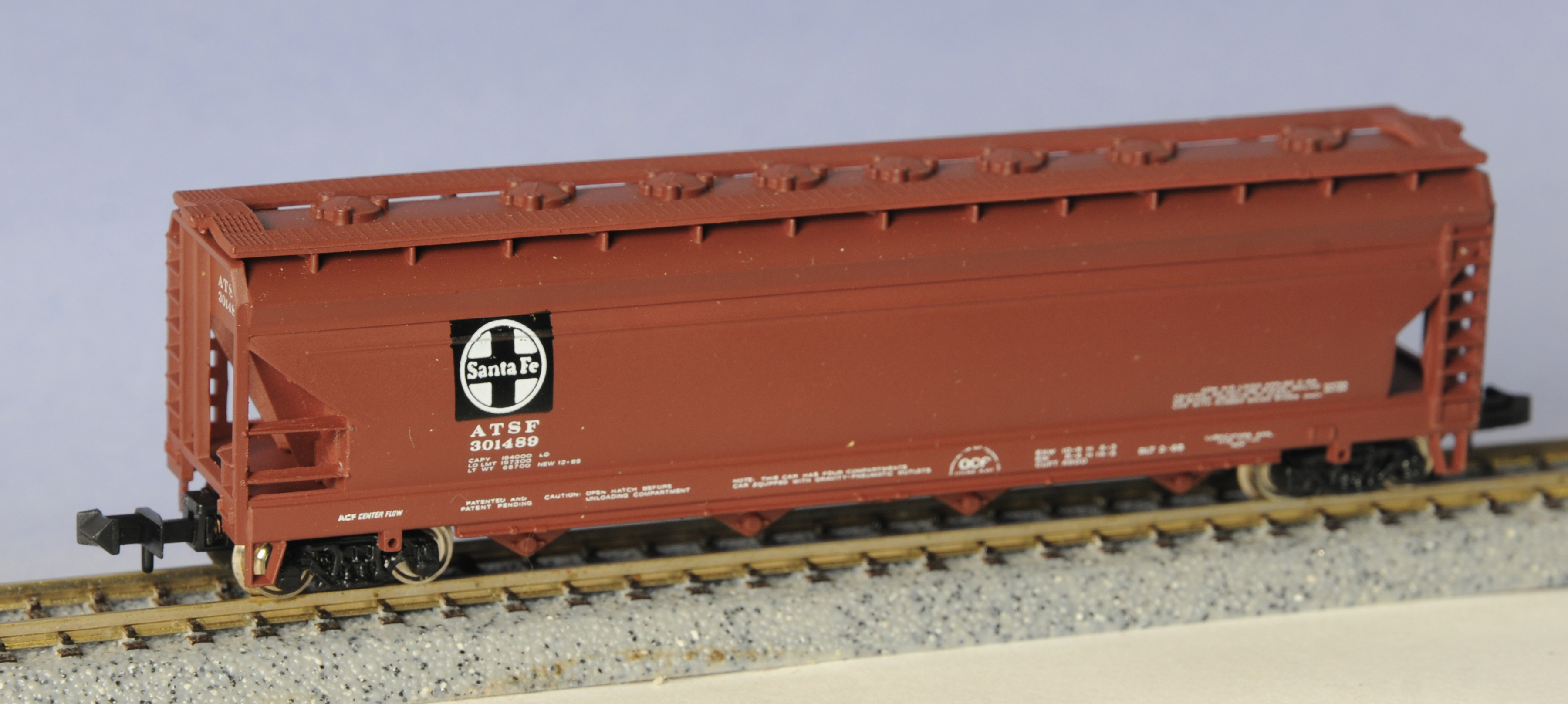Road Name History:  The Western & Atlantic Railroad of the State of Georgia (W&A) is a historic, government-owned railroad which operates in the southeastern United States from Atlanta, Georgia to Chattanooga, Tennessee.
The Western & Atlantic Railroad of the State of Georgia (W&A) is a historic, government-owned railroad which operates in the southeastern United States from Atlanta, Georgia to Chattanooga, Tennessee.
It was founded on December 21, 1836. The city of Atlanta was founded as the terminus of the W&A, with the terminus marked with the Atlanta Zero Mile Post. The line is still owned by the State of Georgia from Atlanta to CT Tower in Chattanooga; it is leased by CSX Transportation.
The W&A Subdivision is a railroad line leased by CSX Transportation in the U.S. states of Tennessee & Georgia. The line runs from Chattanooga, TN to Marietta, GA for a total of 119.1 miles. At its north end it continues south from the Chattanooga Subdivision of the Nashville Division and at its south end it continues south as the Atlanta Terminal Subdivision (Chart A).
This line, originally built to 5 ft (1,524 mm) gauge, is famous because of the Andrews Raid (commonly referred to as the Great Locomotive Chase), which took place on the W&A during the American Civil War on the morning of April 12, 1862.
From Wikipedia

It was founded on December 21, 1836. The city of Atlanta was founded as the terminus of the W&A, with the terminus marked with the Atlanta Zero Mile Post. The line is still owned by the State of Georgia from Atlanta to CT Tower in Chattanooga; it is leased by CSX Transportation.
The W&A Subdivision is a railroad line leased by CSX Transportation in the U.S. states of Tennessee & Georgia. The line runs from Chattanooga, TN to Marietta, GA for a total of 119.1 miles. At its north end it continues south from the Chattanooga Subdivision of the Nashville Division and at its south end it continues south as the Atlanta Terminal Subdivision (Chart A).
This line, originally built to 5 ft (1,524 mm) gauge, is famous because of the Andrews Raid (commonly referred to as the Great Locomotive Chase), which took place on the W&A during the American Civil War on the morning of April 12, 1862.
From Wikipedia
Brand/Importer Information:  Founded in 1906 by Karl Arnold in Nuernberg, K. Arnold & Co. began its life producing tin toys and related items. They produced an extensive line of model ships, doll house items and other toys. In 1935, K. Arnold & Co. hired Max Ernst as their managing director. Ernst, not to be confused with the German realist artist of the same name, was a significant factor in the future of Arnold.
Founded in 1906 by Karl Arnold in Nuernberg, K. Arnold & Co. began its life producing tin toys and related items. They produced an extensive line of model ships, doll house items and other toys. In 1935, K. Arnold & Co. hired Max Ernst as their managing director. Ernst, not to be confused with the German realist artist of the same name, was a significant factor in the future of Arnold.
There are several distinct phases of Arnold's model train production. In the period of 1960 - 1962, Arnold marketed the Arnold Rapido 200 product line; this line was very crude yet it also was a sensation because of its much smaller size than TT.
The next phase was from 1963-1967, when the rapido product line begins to swing toward scale representations of the trains. It is during this period that the "Rapido Coupler" comes into production, beginning its widespread use by all model train manufacturers in N-Scale. It was in 1964 that the term "N-Scale" came into use. Between 1968 and 1970, rapido line of trains reached maturity, notably with its turntable and roundhouse. Arnold entered into a business relationship with the U.S. company Revell around 1968, beginning the marketing of Revell Rapido model trains. This relationship was marked by the beginning of production of more accurate North American prototype models by Arnold. This relationship continued for several years, ending in the late 1960s or early 1970s. Arnold continued their expanded production, with new models until the early 1990s.
On Max Ernst's 1976 retirement, Arnold employed perhaps 200 to 250 people, using three facilities in the Nurnberg area. The Company continued under family control until 1995, when Arnold went into bankruptcy and was sold to Rivarossi of Italy. Rivarossi, in turn, also went bankrupt, leading to the sale of all assets to Hornby of the United Kingdom. Production is carried out in China.

There are several distinct phases of Arnold's model train production. In the period of 1960 - 1962, Arnold marketed the Arnold Rapido 200 product line; this line was very crude yet it also was a sensation because of its much smaller size than TT.
The next phase was from 1963-1967, when the rapido product line begins to swing toward scale representations of the trains. It is during this period that the "Rapido Coupler" comes into production, beginning its widespread use by all model train manufacturers in N-Scale. It was in 1964 that the term "N-Scale" came into use. Between 1968 and 1970, rapido line of trains reached maturity, notably with its turntable and roundhouse. Arnold entered into a business relationship with the U.S. company Revell around 1968, beginning the marketing of Revell Rapido model trains. This relationship was marked by the beginning of production of more accurate North American prototype models by Arnold. This relationship continued for several years, ending in the late 1960s or early 1970s. Arnold continued their expanded production, with new models until the early 1990s.
On Max Ernst's 1976 retirement, Arnold employed perhaps 200 to 250 people, using three facilities in the Nurnberg area. The Company continued under family control until 1995, when Arnold went into bankruptcy and was sold to Rivarossi of Italy. Rivarossi, in turn, also went bankrupt, leading to the sale of all assets to Hornby of the United Kingdom. Production is carried out in China.
Item created by: gdm on 2017-01-23 13:45:21. Last edited by gdm on 2020-05-29 15:15:00
If you see errors or missing data in this entry, please feel free to log in and edit it. Anyone with a Gmail account can log in instantly.
If you see errors or missing data in this entry, please feel free to log in and edit it. Anyone with a Gmail account can log in instantly.







